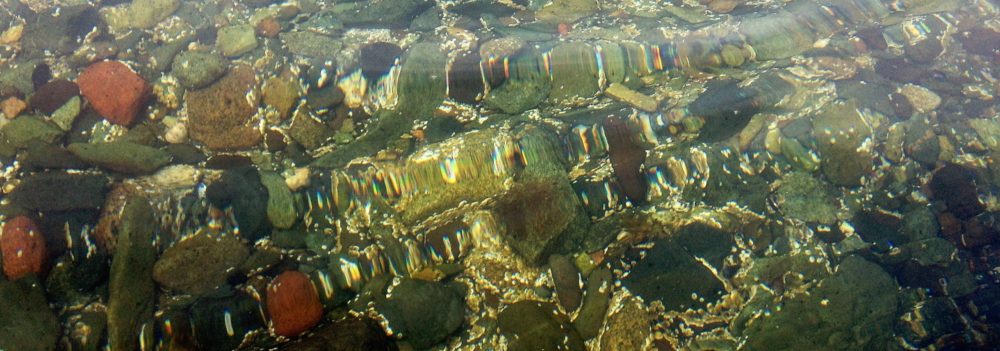Urinary system deck
[q]
Urinary system – function[a]This system eliminates wastes, maintains: water balance, blood volume, blood pressure, electrolyte balance and blood pH.
[q]
Urinary system – structure[a]This system is composed of kidneys, ureters, urinary bladder and urethra.
[q]
Kidneys – location[a]These organs are located in the retroperitoneal at the level of T12-L3.
[q]
Kidneys – blood flow per minute[a]1/4 of cardiac output.
[q]
Kidneys – structure[a] cortex, medulla and pelvis.
[q]
Renal cortex – define[a] the superficial layer which contains most of the nephrons.
[q]
Renal medulla- define[a]the inner part which contains renal pyramids.
[q]
Renal pelvis – define[a] the hollow medial area of the kidney for urine to accumulate.
[q]
Nephron – structure[a] glomerular (Bowman’s) capsule, proximal convoluted tube, loop of Henle, distal convoluted tube and a collecting duct.
[q]
Afferent arteriole – define[a]This type of arteriole enters the glomerular capsule.
[q]
Glomerulus – define[a]This term describes the network of capillaries inside the capsule where plasma is separated from blood cells.
[q]
Efferent arteriole – define[a]This type of arteriole exits the glomerular capsule.
[q]
Peritubular capillary – define[a]This type of capillary winds around the tubule reabsorbing filtrate.
[q]
Through what processes is urine formed?[a] glomerular filtration, tubular reabsorption and tubular secretion.
[q]
Glomerular filtration – define[a] blood separated into cells and plasma.
[q]
Tubular Reabsorption – define[a]plasma is returned to the bloodstream.
[q]
Tubular Secretion – define[a] plasma is rechecked for toxins and cleaned before entering venules.
[q]
Filtrate – define[a]plasma and it’s solutes inside the nephron.
[q]
What does hydrostatic pressure do in the nephron?[a]This passive process drives glomerular filtration.
[q]
What does osmotic pressure do in the nephron?[a]This passive process drives tubular reabsorption.
[q]
What do we make 48 gallons (180 liters) of a day? [a]filtrate
[q]
What do we make 1 to two liters of a day?[a]urine
[q]
Tubular Reabsorption – define[a]This process reabsorbs all nutrients, 99% of the plasma, and electrolytes.
[q]
Renin – effect[a]This kidney hormone triggers the renin-angiotensin pathway.
[q]
Aldosterone – effect[a]This homone causes increased Na+ reabsorption which leads to filtrate reabsorption. Less Urine. More blood conservation.
[q]
What triggers renin release?[a]This hormone is triggered by the kidney in response to low blood pressure.
[q]
Renin – function in the blood[a]This hormone turns angiotensinogen to angiotensin 1.
[q]
Angiotensin II- function[a]This hormone is a vasoconstrictor and trigger for Aldaosterone release.
[q]
ADH, PTH Aldosterone – common target[a]These hormones act on the nephron.
[q]
Urine – define[a]This substance is the remains of the filtrate when it leaves the distal convoluted tubule.
[q]
Micturation – define[a] urination.
[q]
Ureter – function[a]This structure drains urine from kidney to bladder.
[q]
Ureter & Urethra – structure[a]a tube with an internal lining of mucous membrane, a smooth muscle layer, and an outer layer of CT.
[q]
Urethra – function[a] drains urine from bladder.
[q]
Bladder – define[a]This structure is an expandable muscular bag lined with transitional epithelium.
[q]
Polydipsia – define[a] excessive thirst.
[q]
Polyuria – define[a] excessive urination.
[q]
Glucosuria – define[a] glucose in urine.
[q]
Diabetes mellitus – define[a]This term describes a disease where high BGL’s cause failure of osmosis resulting in polydipsia, polyuria and glucosuria.
[/qdeck]
Urinary system deck reversed
[q]
Which term describes a disease where high BGL’s cause failure of osmosis resulting in polydipsia, polyuria and glucosuria?[a]Diabetes mellitus
[q]
Which term describes glucose in urine?[a]Glucosuria
[q]
Which term describes excessive urination?[a]Polyuria
[q]
Which term describes excessive thirst?[a]Polydipsia
[q]
Which structure is an expandable muscular bag lined with transitional epithelium?[a]Bladder
[q]
Which structure drains urine from bladder?[a]Urethra
[q]
Which structures are composed of a tube with an internal lining of mucous membrane, a smooth muscle layer, and an outer layer of CT?[a]Ureter & Urethra
[q]
Which structure drains urine from kidney to bladder?[a]Ureter
[q]
Which term describes urination?[a]Micturation
[q]
What do we call filtrate when it leaves the distal convoluted tubule?[a]Urine
[q]
Which hormones act on the nephron?[a]ADH, PTH, Aldosterone
[q]
Which substance is a vasoconstrictor and trigger for Aldosterone release?[a]Angiotensin II
[q]
Which hormone turns angiotensinogen to angiotensin 1?[a]Renin
[q]
How does the kidney respond to low blood pressure?[a] renin release
[q]
Which hormone causes increased Na+ reabsorption?[a]Aldosterone
[q]
Which hormone triggers the renin-angiotensin pathway?[a]Renin
[q]
Which process reabsorbs all nutrients, 99% of the plasma, and electrolytes?[a]Tubular Reabsorption
[q]
How much urine is produced daily?[a]one to two liters
[q]
How much filtrate is produced daily?[a]48 gallons (180 liters)
[q]
Which passive process drives tubular reabsorption?[a] osmotic pressure
[q]
Which passive process drives glomerular filtration?[a] hydrostaic pressure
[q]
Which term describes plasma and its solutes inside the nephron?[a]Filtrate
[q]
In which process is plasma rechecked for toxins and cleaned before entering venules?[a]Tubular Secretion
[q]
In which process is plasma returned to the bloodstream?[a]Tubular Reabsorption
[q]
In which process is blood separated into cells and plasma?[a]Glomerular filtration
[q]
Which substance is formed through glomerular filtration, tubular reabsorption and tubular secretion?[a] urine
[q]
Which type of capillary winds around tubule reabsorbing filtrate?[a]Peritubular capillary
[q]
Which type of arteriole exits the glomerular capsule?[a]Efferent arteriole
[q]
Which term describes the network of capillaries inside the capsule where plasma is separated from blood cells?[a]Glomerulus
[q]
Which type of arteriole enters the glomerular capsule?[a]Afferent arteriole
[q]
Which structure is composed of a glomerular (Bowman’s) capsule, proximal convoluted tube, loop of Henle, distal convoluted tube and a collecting duct?[a]Nephron
[q]
Which kidney structure composes the hollow medial area of the kidney for urine to accumulate?[a]Renal pelvis
[q]
Which kidney structure composes the inner part which contains renal pyramids?[a]Renal medulla
[q]
Which kidney structure composes the superficial layer which contains most of the nephrons?[a]Renal cortex
[q]
Which organs have a cortex, medulla and pelvis?[a]Kidneys
[q]
Which organs receive 1/4 of cardiac output?[a]Kidneys
[q]
Which organs are located in the retroperitoneal at the level of T12-L3?[a]Kidneys
[q]
Which system is composed of kidneys, ureters, urinary bladder and urethra?[a]Urinary system
[q]
Which system eliminates wastes, maintains: water balance, blood volume, blood pressure, electrolyte balance and blood pH?[a]Urinary system
[/qdeck]
